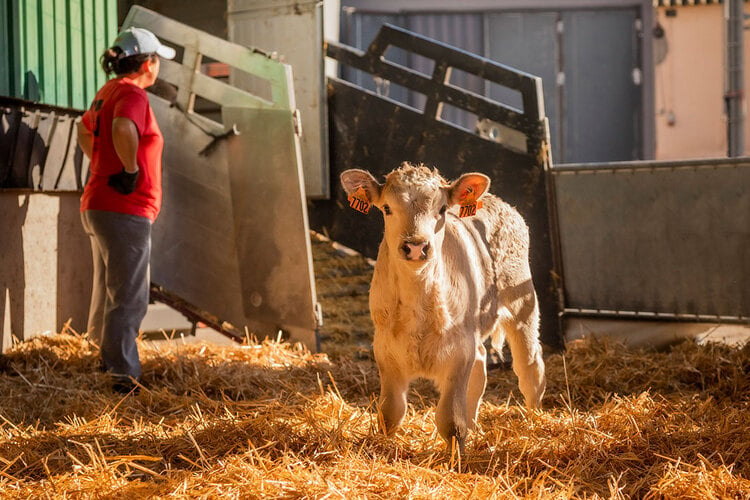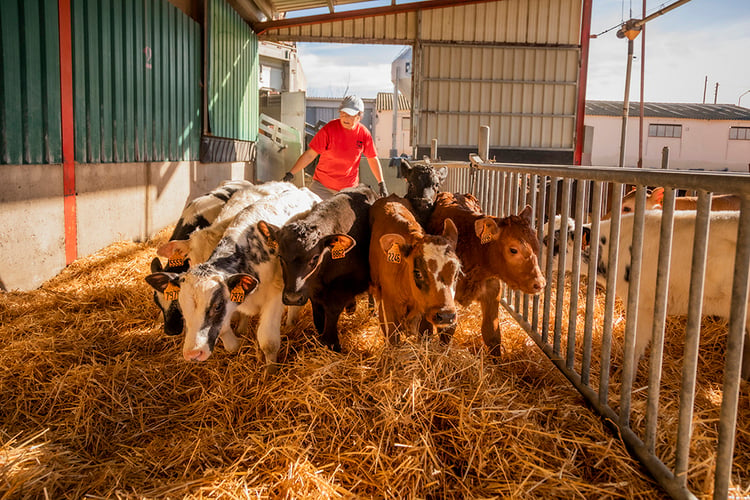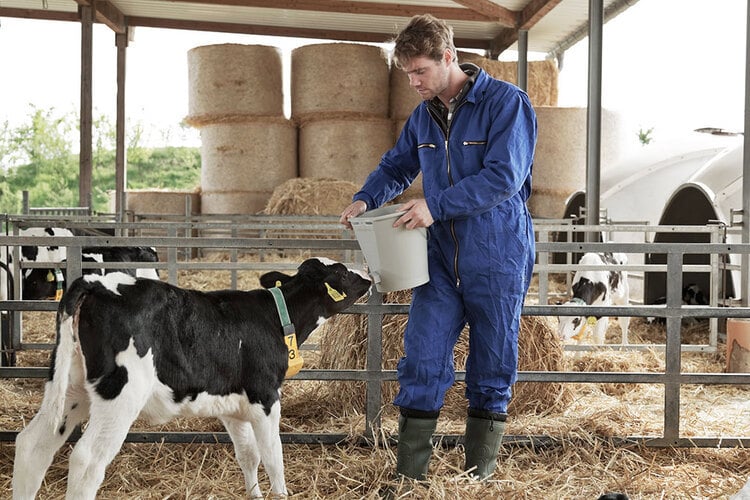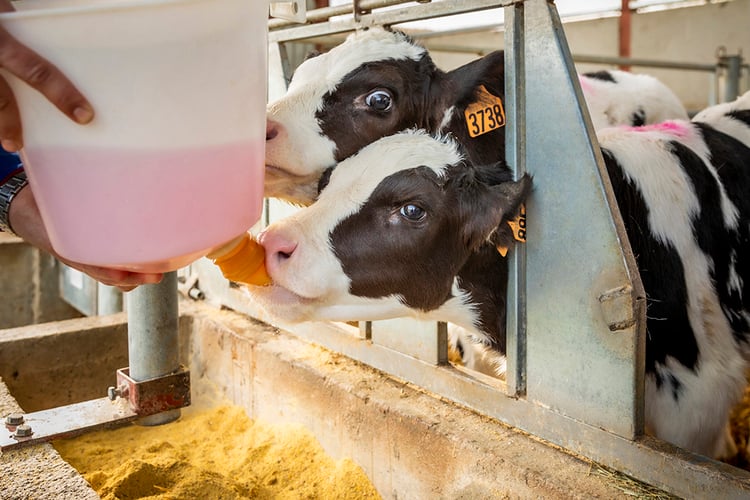
- LifeStart
- Lactobalance
- Lifestart themes
Key takeaways from the research
- Calves that are dehydrated as a result of feed deprivation and stress lose large amounts of potassium while their glycogen reserves are being depleted
- Supplementation of Holstein bulls with a potassium-based electrolyte product in combination with glycerol reduced dehydration and reduced dehydration and increased carcass weight at slaughter

Dehydration as a result of feed deprivation can be prevented by using a calf electrolyte solution with the correct levels of potassium
Stress and feed deprivation in calves results in transient endocrine responses. These endocrine responses lead to dehydration, glycogen depletion, protein catabolism and ultimately to a loss of carcass weight. Glycerol supplementation has been found to elevate muscle glycogen in sheep[1]. Supplementation of cattle with electrolytes attenuated the negative effects of stressors during transport and reduced weight loss[2]. Electrolytes supplemented should however have the correct tonicity to have a positive impact on hydration and bodyweight[3].
Calves that are dehydrated as a result of diarrhoea have typically lost large amounts of sodium. In contrast, calves dehydrated as a result of stress and deprivation of water and feed typically lose large amounts of potassium. De Carvalho et al[4] carried out a study to evaluate the effects of supplementation with a potassium-based electrolyte solution containing glycerol of feed deprived Holstein bulls prior to slaughter.
Materials and methods
Forty-eight Holstein bulls were included in the study. They were randomly allocated to a trial group and a control group of 24 animals each, based on initial bodyweight, following a randomized block design with 6 blocks of 4 pens and 2 animals per pen. Pens were considered the experimental unit and within blocks were randomised to 2 treatments. Drinking water of the bulls in the trial group was supplemented with a potassium-based electrolyte mixture including glycerol at a concentration of 27.6 g/L. Bulls in the control group received drinking water without a supplement. Subsequently, both groups were feed deprived for 48 hours while they had constant access to water with or without the electrolyte supplement.
Results
Water intake was higher (P<0.01) for the animals in the supplement group compared to control animals (47.5 L/animal/day vs. 25.2 L/animal/day). When expressed as a percentage of bodyweight, the bulls in the group with the supplement drank twice the amount of water compared to the controls (14.0% vs.7.5 % of their bodyweight; P<0.01). They also had a lower drop in body temperature was (0.40 vs. 0.65°C after 48h, p=0.02) indicating that the bulls in the supplement group were less dehydrated.
Initial bodyweight was equal (P=0.21) between both groups (333 vs. 335 Kg). However, after 48 hours of feed deprivation, the bulls that were supplemented had a higher bodyweight compared to the controls (321 vs.312 Kg, P=0.01). They lost on average 13.8 kilograms or 4.1% of their initial bodyweight while control animals lost 20.9 kilograms or 6.3% of their initial bodyweight during the feed deprivation period (P=0.02). Hot carcass weight and cold carcass weight after slaughter tended to be higher (P=0.06 and P=0.05, respectively) for the bulls receiving the supplement.
Hot carcass yield, cold carcass yield and cooler shrink were not different (P=0.17, P=0.11 and P=0.16, respectively) between the two groups (50.4%, 49.5% and 1.4% for the supplemented bulls vs. 51.0%, 50.3% and 1.3% for the controls respectively).
Conclusion
A potassium-based hypotonic electrolyte solution containing also glycerol prevented dehydration in animals during a period of feed deprivation prior to slaughter and reduced carcass losses.
References
[1] Gardner, G.E, McIntyre, B.L, Tudor, GD and D.W. Pethick, 2001, Nutritional influences on muscle glycogen recovery following exercise in sheep and cattle. J. L. Corbett and I. Schmidt, editors, Recent advances in animal nutrition in Australia. University of New England, Armidale, Australia. p. 145–151.
[2] Arp, T.S, Carr, C.C, Johnson, D.D, Thrift, T.A, Warnock, T.M. and T.M. Schaefer, 2001, Effects of preslaughter electrolyte supplementation on the hydration and meat quality of cull dairy cows, Professional Animal Scientist, 27:1, 43-51.
[3] Schaefer, A.L, Dubeski, P.L, Aalhus, J.L and A. K. W. Tong, 2001, Role of nutrition in reducing antemortem stress and meat quality aberrations, J. An. Science, 79, 91–101.
[4] de Carvalho, I.P.C. and J. Martín-Tereso, 2017, Electrolyte and glycerol solution supply to feed deprived bulls before slaughter, Proceedings of the annual congress of the EAAP, Tallin, 68: 384.






